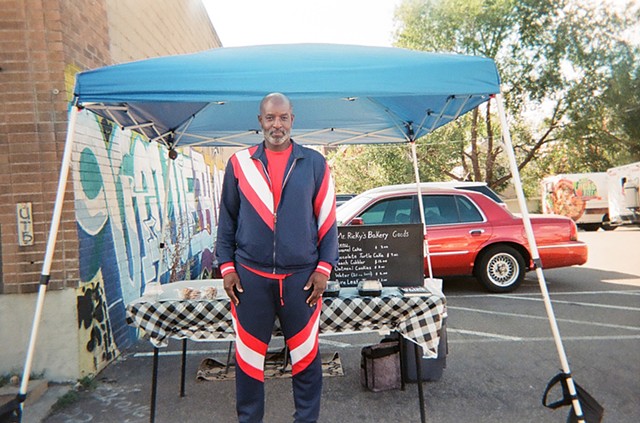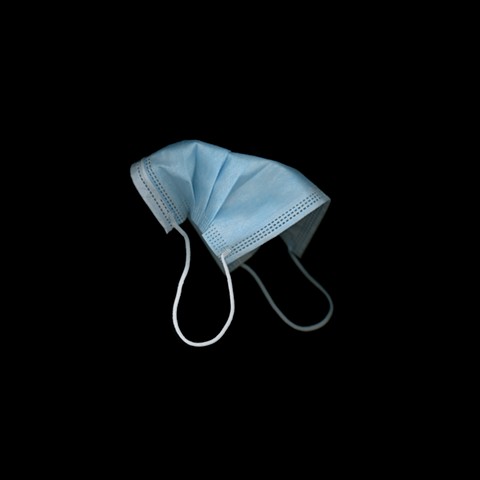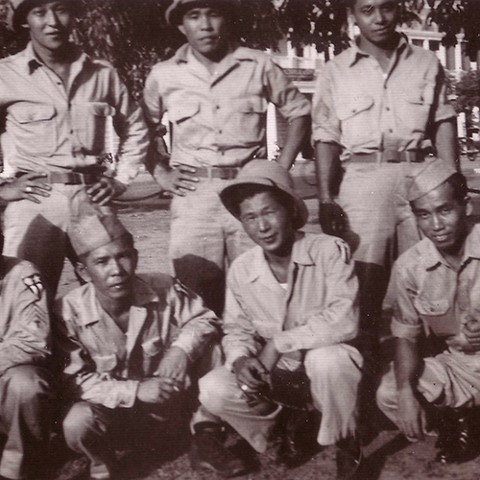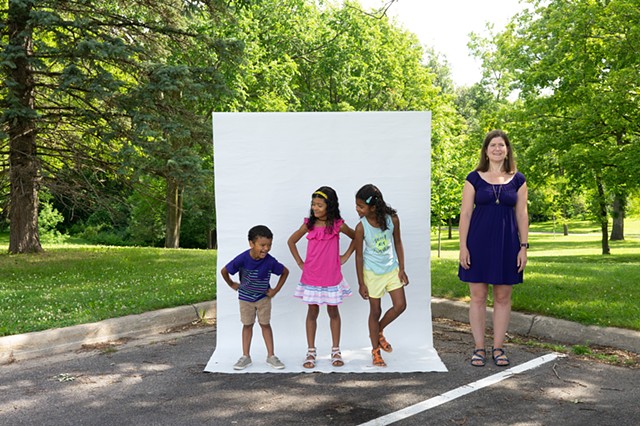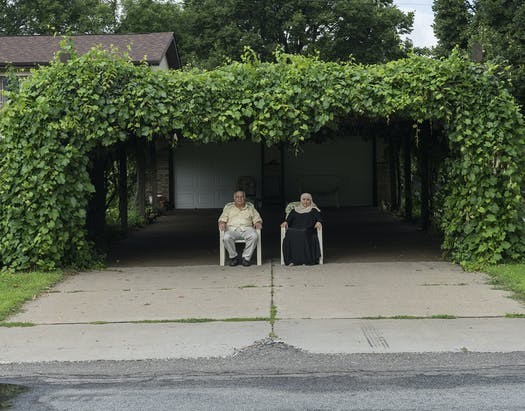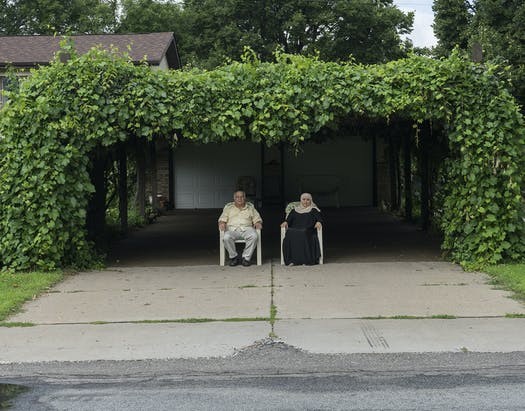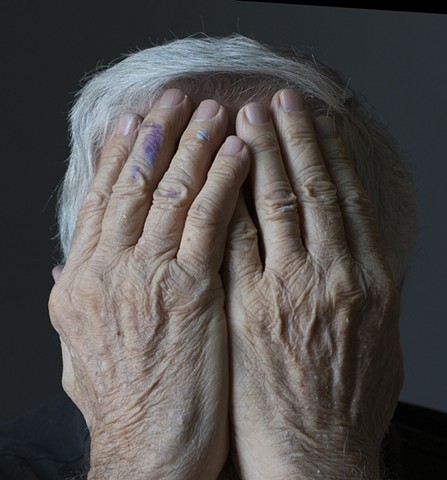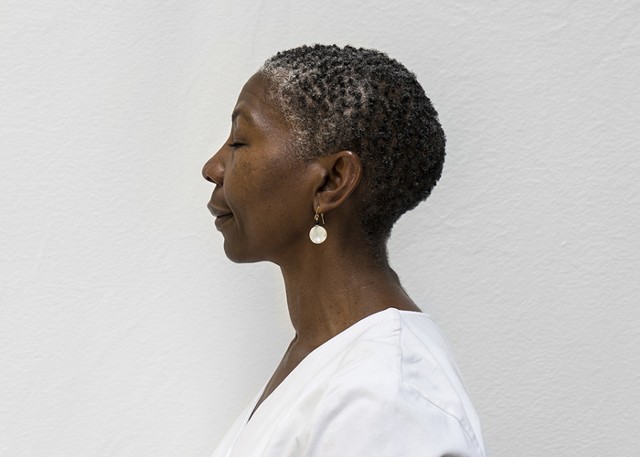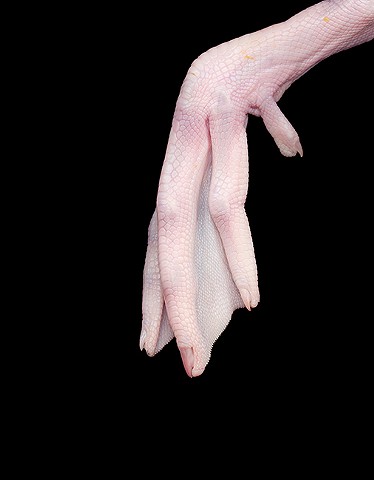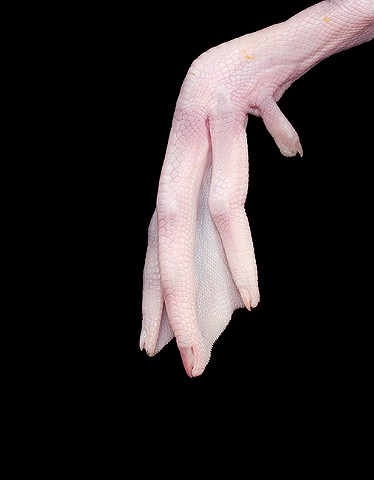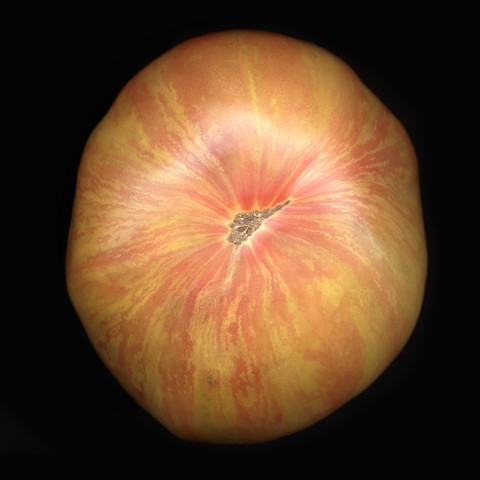Steve Ozone: The Story Behind the Lens YOUA VANG
On perseverance over the span of a creative life: striking out on new paths, making the best of the opportunities that come, and observing how others navigate life
2021_10 must-see art pieces from the 2021 Minnesota State Fair
Photography dominates the show, with 110 pieces on display; prints are the lowest-ranking category, with only 13 works.
Expect to see more dogs than cows, and artists dealing with the impact of the ongoing pandemic. Minnetonka-based Patty Carmody Smith's clay sculpture "Sheltering in Place," of a woman-turned-tree, and Minneapolis-based artist Steve Ozone's still-life portrait of a blue PPE mask reflect the reality of the past 18 months.
2021_The Registry: A documentary film by Steve Ozone and Bill Kubota
The Registry breaks open the hidden history of the US Armyʼs Military Intelligence Service (MIS) during World War II – a story made possible because of a few aging veterans with a little Internet savvy and a lot of determination.
2020_Facebook - Steve Ozone Photography
2017_Form and Content showcases portraits of Immigrants
Form + Content showcases portraits of immigrants in America
Interrupted LandscapesIn the hubbub of the holidays, it was easy to miss Steve Ozone’s opening at Form + Content. But then, Ozone’s show — a sly series of portrait photography, in which immigrants pose against mundane backdrops of daily life — is all about the ease and unease of going unnoticed. Posing in stock environments of middle-class Americana (carports, suburban garages, front lawns), Ozone’s everymen and women, folks of Middle Eastern, Asian and African descent, simultaneously pop with immigrant identity and absorb into the surrounding banality. It’s a flip-flop duality, notability and normalcy, that Ozone calls “the friction between diversity and homogeneity.” In a clever touch, he often drops a screen of canvas behind his subjects. The false backdrop makes us think of casting, of situating actors in sound stages and challenging them to pretend while also being natural, to let true selfhood suffuse an adopted character. (Noon-6 p.m. Thu.-Sat. through Jan. 21, with an artist’s talk Jan. 22 from 1-3 p.m. Form + Content, 210 N. 2nd St., Mpls. formandcontent.org)
2016_MCAD highlights the work of four Twin Cities-based artists known for their striking images....
MCAD highlights the work of four Twin Cities-based artists known for their striking images that suggest an understanding of or intimacy with the communities they photograph.
This exhibition puts these artists’ diverse philosophical and methodological approaches in dialogue with one another and the gallery space at MCAD. Their varying explorations of cultural assimilation and attitudes toward representational responsibility tie directly into the formal aesthetic choices they make, photographic history, and the current political climate.
Artists showing:
Pao Houa Her
Selma Fernandez Richter
Mohamud Mumin
Steve OzoneThis exhibition takes place in MCAD's Concourse Gallery and shows simultaneously with 2015/16 Jerome Fellowship Exhibition in the Main Gallery.
Cover Image Credit: Steve Ozone, Haffat and Fairfa, 2016, archival pigment print, 13” x 17”
Event Details
Host
Minneapolis College of Art and Design
Showing
Oct 7th - Nov 8th, 2016
2501 Stevens Avenue, Mpls
Reception
Fri Oct 7th, 2016 6PM - 8PM
2501 Stevens Avenue, Mpls2016_What the State Fair art show says about Minnesotans
"Minnesota’s rural landscape is changing as small farms and towns disappear, prompting such nostalgic laments as Gregory Mellang’s photo of shabby schoolbooks in “Simpler Times in Rural America” and Daniel Beers’ grainy, mirage-like photo of a totally collapsed “Saddleback Barn.”
But life continues on its inexorable way. Curiously, it’s the elderly who are most often represented here, sometimes obliquely as in Terry Gydesen’s photo of an empty room on a winter day after “My Parents Move to Assisted Living.” Or Steve Ozone’s faceless portrait of “James Conaway, Artist,” a man concealed behind the paint-flecked hands by which he earns his living. In an especially poignant image, St. Paul photographer Ashley Rick evokes the pathos and unbending spirit of stooped, bathrobe-clad “Old Man Henry” playing his shabby grand piano in a battered room."
2016_Local photographer Steve Ozone captures interior lives in exterior settings at Form + Content.
Review: Steve Ozone’s Interrupted Landscapes
Posted December 14th, 2016 by Valerie DéusLocal photographer Steve Ozone captures interior lives in exterior settings at Form + Content.
Art revolving around identity may sometimes be seen as insular, but I welcome being led into someone else's world. The ability to say something about yourself and the viewer by sharing that world is part of the magic that happens. Steve Ozone's Interrupted Landscapes, a show of photographs opening this Saturday at Form + Content, has that magic in abundance.
As a Japanese-Chinese American, Ozone used his personal history as a jumping-off point for this body of work. Originally started as an examination of Japanese Americans, this series evolved into a visual exploration of all immigrants. Ozone engages the immigrant experience and captures the connections between his subjects’ stories and their new environments. In a sense, there's an attempt to weave the two together, people and nature, but there's also a clear divide between them.
The term “landscape” here doesn’t just refer to greenery but to these immigrants’ surroundings, indoor and outdoor, manmade and otherwise. Many of the subjects are framed within a white canvas backdrop — a nod to Ozone’s background in commercial photography, taking portraits and shooting housewares for Dayton’s — as a way to separate the subjects from their landscapes. This white border isolation forces the viewer to focus on the person but also hints at a clean slate, a blank canvas onto which the immigrants can expand the American part of their story.
These bodies mixed in with all the natural green landscape give the work an escapist feel. There’s an urgency to know their story but also the story of the background. Where are the animals going? What building is this? How awesome is this green cave?
In one photo taken in Northeast Minneapolis — an area historically popular with eastern European immigrants — a young Polish couple, one an immigrant and the other Polish-American, situate themselves within their Northeast community, showing that direct connection to history and community. Diving into his own identity, the artist not only photographs but interviews the subjects about their own immigrant stories.
I find myself getting lost in the expanse of the green landscape, a type of visual elixir. It pulls me in immediately past the interrupting bodies into the stuff that makes up the background, whether it be a garage or a field. The green doesn't look back at you either, so there's a safety in focusing on it and not on the people. The real interruption is their clothing keeping their natural selves from nature.
There are two elements at the core of these images: first, the green body of landscape, wide and calling. I feel myself begging to be wrapped up by it. The next sensation involves the story of these very real people: the world they inhabit and what's behind the earnestness in their eyes. The elderly couple in the green cave mirror my grandfather’s routine of sitting in his garage from sun up to sun down, waving at neighbors and anchoring the neighborhood. The re-creation of community and home in sometimes hostile lands is what humans have been doing since the beginning. Interrupted Landscapes connects us to these greater historical human stories.
--Valerie Déus
Interrupted Landscapes opens this Saturday at Form + Content Gallery in the North Loop and will be on view during gallery hours through Jan 21st.
Winter Blooms On The Minneapolis Gallery Scene by Mary Abbe
“Wintertide” is bigger, more ambitious and stylishly presented in Public Functionary’s handsome warehouse in northeast Minneapolis. It features just 32 pieces — paintings, photos, sculpture and mixed-media compositions — by 32 regional artists, most living in the surrounding neighborhood. They were selected from 479 pieces entered by 180 artists.
The best is Steve Ozone’s “Duck Paw,” a bizarre close-up of a duck foot positioned like an albino dowager’s wrinkled hand extended for a kiss. A show stopper at the State Fair, the “paw” retains its creepy sizzle.
State Fair art is above average, naturally
State Fair art is above average, naturally
Article by: MARY ABBE , Star Tribune
Updated: August 24, 2012 - 8:10 AMAt first glance, "Foot #1" by Stephen Hiroshi Ozone appears to be a fashion photo of a pale human hand in strange mesh gloves, but upon examination proves to be a huge, surreal image of a thoroughly scrubbed bird's foot (chicken, maybe?) splayed against a black ground, its curled nails buffed to Parisian sheen. It's bizarre, creepy and an absolute knockout.
Four Twin Cities-based artists offer perspectives on the immigrant communities that call Minnesota home in an exhibition that's as diverse aesthetically as the communities that make up the subject matter.
What it's about: Four Twin Cities-based artists offer perspectives on the immigrant communities that call Minnesota home in an exhibition that's as diverse aesthetically as the communities that make up the subject matter. Selma Fernandez Richter, Pao Her, Mohamud Mumin, and Steve Ozone each have created artwork that evokes their rich understanding of different immigrant groups in which they are immersed in, resulting in photographic work that illuminates the "New Americans" living here.
Why you should go: Throughout the history of Western art, much of the documentation of non-white culture has been taken on by outsiders: American or European anthropologists, artists, photographers, and other documenters. With "The New Americans‚" four artists who are from immigrant communities themselves have taken on the task of capturing moments that shed light on those cultures, offering a perspective that is both objective and rich with layered understanding. Come support these artists and get a nuanced look at immigrant communities.
Seven established artists explore intersections of the human and animal worlds, the technological and organic spheres, and compress those stories into a harrowing, exhilarating archetypal narrative.
http://mnartists.org/article.do?rid=339891|
by Camille LeFevre October 8, 2013Seven established artists explore intersections of the human and animal worlds, the technological and organic spheres, and compress those stories into a harrowing, exhilarating archetypal narrative.
IT’S UNBEARABLE AT TIMES to fully recognize, much less negotiate or remediate, the havoc wrecked by colonialism and capitalism on our natural world. Just as our push toward the singularity continues unabated -- as researchers and scientists advance technologies that allow us to become less human and more cyborg -- so does the insatiable consumption of any raw, natural, organic material we can get our hands on (including people) drive species mutation, devastation and extinction.
The mission of John Schuerman’s new Instinct Gallery is to present “socially relevant, thematic group exhibitions that engage audiences” with “an emphasis on art that honors nature,” according to the website. Humanity’s relationship with the natural world is so fractured -- our love and admiration for natural processes is often dissembling or simply utilitarian, yet also primal. And so we need to reconnect where we can. Instinct Gallery wants to show us a way, through art.
The path, if the gallery’s breathtaking inaugural exhibition Remnants and Curiosities of the Natural World, is any indication, is full of wonders at once harrowing and exhilarating. Populated with the work of seven established artists, the show explores the potential outcomes of a past, present and future, the human and animal, the technological and organic compressed into a universal, archetypal narrative.
There are elaborate dresses—9.5 feet in length—of sheep and bison wool, linen and silk, onion-skin dye, horse yokes and rope befitting a tribe of warrior princesses. Woven by Moira Bateman, the dresses are from her Mnemosyne Series. Mnemosyne, fittingly, was the goddess of memory in Greek mythology, the daughter of Gaia and Uranus, and the mother of the nine Muses fathered by Zeus. To stand before these garments is akin to absorbing the raw energy of the Jung’s collective unconscious, in one tactile sensation.
Tim Nimmo’s sculptures, selected from his Artifact Series, are gray clay objects resembling the horns of prehistoric creatures. David Aschenbrener’s sculptural assemblages are exquisite hybrids of animal and mineral rendered as spiritual totems. Schuerman’s Escher-esque drawings are lifelike in their profound detail. Lynn Speaker’s evanescent paperworks created with fire, gunpowder and natural materials join time, happenstance, and intention in memento mori of explosive intrigue.
Steve Ozone’s meditative video on the injecting of dye into parrotfish to color and commodify them for tourists also speaks to the repercussions of commercialization on an organism’s natural processes. Jantje Visscher’s evanescent sculpture uses light, shape and material to challenge perception, and ideas of repetition in a world of mass consumption and over-production.
These are established artists working the height of their creative powers, with tremendous sophistication, technical expertise, intelligence, and grace. Co-curated by Schuerman and Speaker, Remnants and Curiosities of the Natural World re-introduces us to some of the most relevant, important and astute artists working here today. In their work—these bits, oddities, takes and assemblages on a world now largely relegated to memory—we discover our essential nature.
Remnants and Curiosities of the Natural World is on view through November 1, 2013 at Instinct Gallery, 940 Nicollet Mall, Minneapolis. For more information, as well as gallery hours: http://www.instinctmpls.squarespace.com/current/
About the author: Camille LeFevre is a Twin Cities arts journalist.
Minnesota's got talent
Article by: MARY ABBE
Updated: August 25, 2011 - 5:41 PMThe State Fair's fine art show takes the prize this year with a winning selection of paintings, photos and other works.
After several rocky years, the Minnesota State Fair Art Show has staged a terrific comeback, recouping its rightful title as the state's best pro-am talent show.
With 355 sculptures, paintings, photos, prints, drawings and fine crafts -- picked from 2,084 entries -- it offers a lively mix of well designed landscapes, portraits and abstractions, spiced humorous asides, keen observations, a few conceptual riffs, a bit of social commentary and even some spiritual musings.
Animals are in surprisingly short supply, with goats and poultry getting
An expanse of rough black floor introduces high design into Brooklyn Park photographer Matt Schmidt's unsentimental photo of severed chicken heads with yellow beaks, milky eyes and bloodied neck feathers. There's equal drama in the sun-like orb of an enormous "Heirloom Tomato" hanging nearby, photographed by Steve Ozone of Minneapolis.
